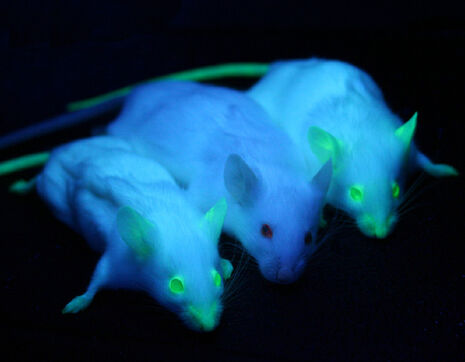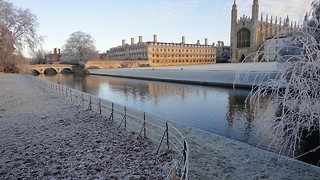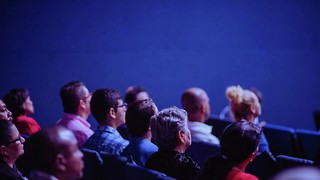Tsien: Advice from a Nobel winner
Madeline Kavanagh discusses the research and advice of award-winning Professor Roger Tsien

Professor Roger Tsien is probably best known for his Nobel Prize-winning work on developing the application of green fluorescent protein (GFP) as an imaging agent for biomedical research. As the name suggests, GFP has the unusual characteristic of producing a magnificent green glow when irradiated with UV light. For example, GFP has been used as a marker to track gene expression, determine the subcellular location of proteins, observe molecular interactions in real-time and, most importantly, to make animals glow in the dark! Tsien and other researchers have been able to generate an entire rainbow of mutant proteins which fluoresce at different wavelengths of light. However, this colourful discovery barely scratches the surface of the contributions that Tsien’s research has made to understanding the fundamental processes of cell-signalling, tumour biology and neurophysiology.
Tsien’s original PhD research, conducted at the University of Cambridge under the supervision of Dr Richard H. Adrian, focused on developing imaging agents to monitor the intracellular concentration of calcium ions. Calcium ions are essential signalling molecules that are involved in a broad range of processes from neuron signalling to cell division, fertilisation, muscle contraction and enzyme regulation. Tsien subsequently entered the field of optogenetics; studying methods of genetically modifying cells to express a specific type of light-sensitive calcium ion channel in their outer membrane. Irradiation with light enables researchers to literally turn neurons on and off in real-time with the flick of a switch!
Tsien has been recognised with numerous awards for his contributions to science and is an author of more than 300 research papers. Yet, as an individual, I found him incredibly humble and dismissive of his achievements, as I guess only a Nobel Prize winner can be. After commenting that he was the “same scientist, or even smarter” before he won the Nobel Prize, Tsien admitted that winning the idolised Nobel has only made it more difficult to secure research funding and have publications accepted. After briefly discussing his current research aims, as well as his involvement with various science outreach programmes and the “vastly important” role of engaging children in science, I was keen to get to my main question: what was Tsien’s secret to being a successful scientist? And, what advice could he give to all of the PhD students and budding Nobel laureates in Cambridge about how to keep their eyes on the prize?
Obviously familiar with this sort of question, Tsien succinctly summarised his six key points of advice for me. The first was to “try to find projects that give you sensual pleasure”, like turning biological systems into a beautiful rainbow of colours. As Tsien explained: “You don’t know what is going to work, so you might as well pick something that is fun”, as this will at least make “getting up that little bit easier”, something I am sure all university students struggle with at some point in their degree. His second point was that students need to recognise “that your batting average will be low”. During the lecture following our interview, Tsien reminded the audience that there is a “genuine likelihood of failure” in research. He further warned ambitious students that “your best papers may be rejected from the most fashionable journals” and that this is not necessarily a reflection on the quality of the research. Thirdly, and something that is a general lesson for life, Tsien urged that students “learn to make lemonade from lemons”. This is particularly good advice when considering the serendipitous nature of some of the most important scientific discoveries throughout history.
Finding “the right collaborators” was Tsien’s next pointer. In the increasingly interconnected world of science, where large, multidisciplinary research teams often work together to address global challenges, Tsien stressed that scientists who are successful learn to exploit their collaborators “kindly, and for mutual benefit”. Finally, Tsien suggests students put their “neuroses to constructive use”, and utilise their individuality as a positive force in their research.
Wise words indeed.
 Comment / Anti-trans societies won’t make women safer14 November 2025
Comment / Anti-trans societies won’t make women safer14 November 2025 Fashion / You smell really boring 13 November 2025
Fashion / You smell really boring 13 November 2025 Features / Beyond the Pitt Club: The Cambridge secret societies you have never heard of16 November 2025
Features / Beyond the Pitt Club: The Cambridge secret societies you have never heard of16 November 2025 News / Controversial women’s society receives over £13,000 in donations14 November 2025
News / Controversial women’s society receives over £13,000 in donations14 November 2025 News / Pembroke flood damage forces ‘costly’ repairs17 November 2025
News / Pembroke flood damage forces ‘costly’ repairs17 November 2025









